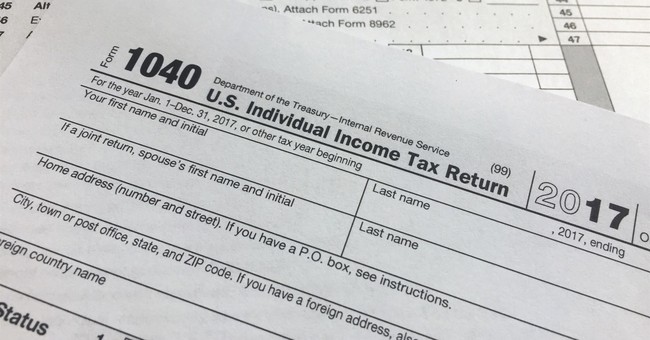Rising federal spending is pushing up debt to dangerous levels that undermine growth and could trigger a financial crisis. But concern about debt is not the only motivation to cut spending. High and rising spending is harmful in many ways.
As the government expands, the marginal benefit of additional spending likely declines. At the same time, the marginal cost of funding the government through taxes and borrowing rises more than proportionately.14 At a certain point, the marginal costs of overall spending top the marginal benefits, and today’s federal government has likely far surpassed that point.15
In addition, as the federal government expands, diverse and innovative state, local, and private approaches to tackling problems are displaced or crowded out. For example, Medicare and Medicaid expansion displaces some private health coverage, welfare programs displace private charity, and Social Security displaces private savings.16
Another problem is that federal expansion exacerbates conflicts in society because the government imposes one‐size‐fits‐all rules and redistributes resources by coercion rather than voluntary means. In our huge and pluralistic society, decentralized decisionmaking by the states and the people makes more sense than top‐down control by Washington.
Finally, federal expansion is creating policymaker overload. The massive size and scope of federal activities are overwhelming the ability of lawmakers to allocate resources efficiently, provide program oversight, or make needed reforms. Congress does not have the time or the expertise to supervise the thousands of activities it funds. Milton Friedman noted, “The tragedy is that because government is doing so many things it ought not to be doing, it performs the functions it ought to be performing badly.”17
The following four sections discuss reasons to cut each of the types of spending.
Transfers. The largest federal transfer programs and the 2023 spending amounts are Social Security ($1.3 trillion), Medicare ($1.0 trillion), veterans’ programs ($168 billion), refundable tax credits ($144 billion), and food stamps ($135 billion).18 Note that many benefit programs, such as Medicaid, are grouped under “aid to the states” because they are administered by state governments, not the federal government.
Why should Congress cut transfer programs? Because they are zero‐sum structures—every dollar of spending on some people comes at the expense of taxes on other people, either now or in the future.19 Actually, transfers are worse than zero‐sum for two reasons.
First, the taxes to fund transfer programs reduce productive efforts in the economy. Taxes discourage people from working, saving, and starting and growing businesses. The harms caused by these negative behavioral responses are called deadweight losses. For the federal income tax, deadweight losses created by every dollar of higher taxes are roughly 40 to 50 cents.20
Suppose that Congress is considering spending $10 billion to expand food stamps. Putting aside whether the program is constitutional or morally justified, does it make economic sense? The program’s benefits would have to be higher than the total cost to the private sector of about $15 billion, which includes the $10 billion direct cost to taxpayers plus another $5 billion in deadweight losses.
Second, transfers are worse than zero‐sum because they can discourage recipients from making productive market‐based choices. Welfare benefits induce recipients to work less. Farm subsidies distort planting choices. Social Security’s retirement benefits suppress personal savings. As with the taxes that fund transfer programs, the spending itself induces people to change their behaviors in ways that generate deadweight losses.
The negative tax and spending effects of programs create a “leaky bucket.” Economist Michael Boskin said, “The cost to the economy of each additional tax dollar is about $1.40 to $1.50. Now that tax dollar … is put into a bucket. Some of it leaks out in overhead, waste, and so on. In a well‐managed program, the government may spend 80 or 90 cents of that dollar on achieving its goals. Inefficient programs would be much lower, $.30 or $.40 on the dollar.”21
Thus, a new program might cost the private economy $1.50 but produce benefits of, say, $0.50, which creates a 3‑to‑1 ratio of costs to benefits. Economist Edgar Browning came to the same conclusion in his book on the economics of government spending: “It costs taxpayers $3 to provide a benefit worth $1 to recipients.”22
In addition to economic damage, there are other sorts of collateral damage from transfer programs. For example, food stamps subsidize the caloric intake of unhealthy foods, which may contribute to America’s obesity crisis. Another type of collateral damage from government expansion is the loss of individual freedom. Milton Friedman argued that when considering programs, policymakers should look at the cost of “threatening freedom, and give this effect considerable weight.”23
Congress should reform transfer programs to reduce the collateral damage from taxing and spending. For example, Congress should trim Social Security benefits by raising the full retirement age, reducing benefits for high earners, and making other adjustments.24 At the same time, Congress should liberalize rules for private retirement vehicles such as 401(k)s and Individual Retirement Accounts. Private retirement savings do not create the negative work incentives that the current Social Security system does.
Aid to the states. The federal government spends more than $1 trillion a year on state and local programs for education, housing, welfare, transit, and other activities. But it would be better to fund these activities with state and local resources rather than federal aid for many reasons.25
Federal aid distorts spending choices by state policymakers. It induces them to spend more on federally subsidized programs than state residents would favor if they directly footed the bill. Also, since federal aid is “free” money to state officials, they tend to spend it less carefully.
Federal aid imposes extra layers of bureaucracy and regulations. The nation’s public schools, for example, must deal with contentious and time‐consuming federal regulations that come tied to federal aid. Similarly, federal regulations tied to infrastructure aid raise costs and slow the completion of projects such as highways.
Federal aid for the states undermines local democracy. Residents in different states have diverse preferences for education, welfare, and other activities, but federal aid regulations often mandate one‐size‐fits‐all rules. Aid programs shift program decisionmaking from local elected officials to unelected officials in Washington.
If federal aid were cut, state policymakers could replace the funding with their own funding if they choose. They would be in position to make direct tradeoffs between the benefits of each program and the tax costs. Such decentralization of decisionmaking would improve the quality of American governance.
Purchases. In 2023 the federal government spent $844 billion on gross investment and intermediate purchases of goods and services. Investment includes spending on long‐lived assets such as buildings, ships, and flood‐control structures, while intermediate purchases includes spending on such items as food, ammunition, and consulting services. Purchases are also called procurement.
A fundamental problem with government is that its investments and other spending allocations are guesswork. Would fighter jets or passenger rail be the best place for added investment? The government has no mechanism to make efficient tradeoffs across such alternatives. In markets, choices are made with the help of prices that reflect consumer demands. But government choices are not made within markets—they are top‐down mandates—and there are no good sources of data or feedback indicating whether investments add value or not.
Efficient federal investment is also undermined by pork barrel politics and corruption. The strength of state delegations in Congress, for example, influences which fighter jets the military purchases and the states they are made in. As for corruption, look no further than the Fat Leonard scandal that broke in 2016. Leonard Francis gained hundreds of millions of dollars of Pentagon contracts by essentially bribing navy officers with gifts, prostitutes, and other favors.26
Even when initial investment choices are sound, federal projects are often mired in inefficiency. This reality is highlighted by frequent cost overruns on weapons systems, energy facilities, veterans’ hospitals, air traffic control (ATC) upgrades, and many other investments.27 This problem has long plagued the government—in 1836, for example, a Ways and Means Committee report criticized the Corps of Engineers for cost overruns on 25 projects it reviewed.28
How should Congress cut spending on purchases? One way is to move investment activities that can be supported by marketplace revenues to the private sector.29 Our ATC system, for example, should be privatized and supported by aviation fees, as is the ATC system in Canada. Privatized businesses have strong incentives to invest where market demands are, free from the politics and bureaucracy that plague federally owned businesses such as our ATC system, Amtrak, and the US Postal Service.
Another way to cut federal purchases is to reduce the government’s massive holdings of 245,000 buildings, many of which exceed federal needs.30 The excess has become acute in the wake of the pandemic, as many federal agencies have adopted remote work policies and left their headquarters partly empty. In 2023 the Government Accountability Office found that 17 federal agency headquarters were at 25 percent capacity or less.31 Bizarrely, despite the empty offices, federal agencies have continued their usual pace of purchasing about $1 billion a year in new office furniture.32
Compensation. Congress could reduce costs in the $556 billion budget for federal worker compensation (wages and benefits) in three ways. The first way is to trim the benefits of the 2.4 million civilian federal workers. In 2022 average wages and benefits for these workers was $147,963, which was 63 percent higher than the $91,021 average for workers in the US private sector.33
Comparisons between similar federal and private jobs find that federal workers have an advantage mainly in benefits, not wages.34 Federal workers receive post‐employment health benefits, for example, and they receive both defined benefit and defined contribution pension plans. Few private‐sector workers enjoy such generous benefits. Congress should model federal benefits after typical private‐sector packages.
A second way to reduce federal compensation costs is to increase efficiencies and reduce worker counts. However, without the need to earn profits government agencies face little pressure to increase efficiencies, such as by firing unproductive workers. Federal workers are protected by strong civil service laws, and many are represented by unions. The result is that federal workers are fired at only about one‐sixth the rate of private‐sector workers.35
Another factor that undermines efficiency is that federal workers are generally paid and promoted based on longevity, not performance. The result is that less competent workers tend to stay in federal bureaucracies for a long time and gain senior positions, while many of the best workers get frustrated and leave.
Federal agencies have masses of red tape and excess management layers that slow decisionmaking and impede change. Also, much of the federal government is overseen by short‐tenured political appointees, who are often inexperienced in the complex activities handled by their agencies.
Congress could fix some of the inefficiencies in federal agencies, such as by making firing easier. But the structural realities of the government—most importantly, the lack of a profit motive—make it unlikely that federal agencies will ever be as efficient as private businesses.
That is why the third way to save money on federal compensation is the best one—eliminating federal agencies or privatizing them. For example, eliminating the federal Department of Education would save about $900 million a year on compensation for its 4,500 employees, and eliminating the Department of Housing and Urban Development would save $1.7 billion a year on compensation for its 9,300 employees.36




